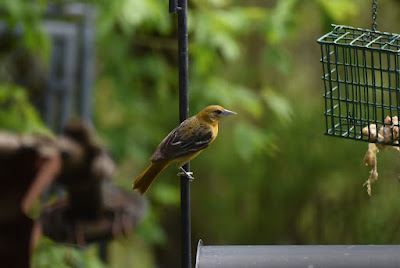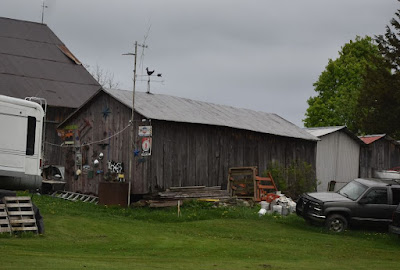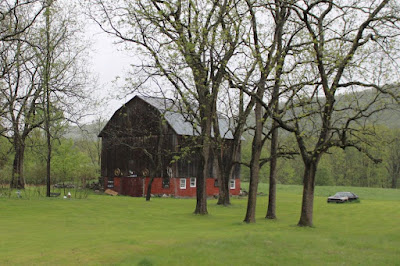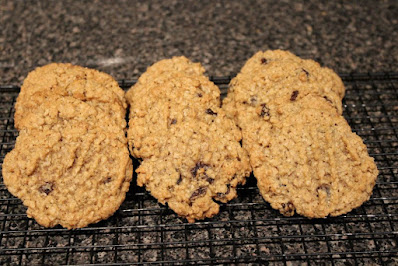Sometimes it’s hard to come up with a title for my letter blog. Especially when we’re going to cover a variety of topics and not one sticks out in my mind more than the others. This is one of those times.
Let’s
start this week with my beaver since many of you have asked about him. Okay,
okay! By many I mean one. One of you asked about him.
The beaver only spent a couple of more
days with us, then the rain started — and it rained all week!
He
seemed to be doing well. He was swimming around, he was eating the water lilies,
and eating the scrub willows that grow along the pond’s edge, and he dug a den.
With all of the rain, the pond filled and the den entrance was underwater. Whether he dug it on an upward slope or not, I don’t know. But then he was gone.
“I
figured he would,” my oldest and much-adored sister said. “He was just eating
and recuperating. He needs a mate though, so I didn’t think he’d stayed long.”
I
wish he’d have stayed long enough to eat all the lilies and scrub willows!
The
beaver isn’t the only casualty of all the rain.
A mated pair of Red-winged Blackbirds
built their nest in the dried husks of last year’s bullrush. It's now
underwater as well.
“It’s
early enough in the season they can start a new nest,” I told Mike.
Speaking
of nests...
The
tent caterpillar nests are easy to spot.
In the United
States, there are more than 1,000 species of tent-caterpillar, and can be found
in almost every state in the country. The caterpillars don’t sting and are not
Gypsy Moths. They turn into a moth with two pale stripes running across the
forewings.
Most
of the time the caterpillars are not harmful to the trees and only defoliate a
few branches. They’re even beneficial to the environment by providing a food
source for wildlife. Once the caterpillars mature, they leave their tents and
become solitary feeders and the birds will pick them off the branches. Birds
aren’t the only critter that eat them. Parasitic wasps, stink bugs, hornets,
and yellow jackets attack tent caterpillars, either consuming them directly or
laying eggs inside them. Then we have squirrels, raccoons, foxes, mice,
chipmunks, and shrews, which will all eat tent caterpillars, especially when
they fall to the ground. Then we have Eastern
box turtles, garter snakes, copperheads, skinks, frogs, and toads that all feed
on tent caterpillars and their moths. And if the caterpillars fall into water,
they may be eaten by fish or aquatic turtles.
I
went down to our pond a couple of days in a row looking for the beaver. Since
he wasn’t there and I was with my camera, I took some pictures for you.
Apple blossoms on our volunteer apple tree. It will usually provide a few small apples for the deer.
Because the apple tree lives close to this evergreen tree, we get something called Cedar-apple rust. It looks sorta like an orange flower when it’s engorged with water.
This
plant disease requires both hosts to complete its life cycle. Here’s how it
works. The fungus overwinters on evergreen trees, forming brown, dimpled galls.
In the spring, these galls swell and produce gelatinous orange tendrils that
release spores. The spores travel by wind to infect apple trees, causing bright
orange spots on leaves and fruit. Later in the season, apple trees release
spores that travel back to cedar trees, continuing the cycle.
Right next to it is an Asian Honeysuckle. In traditional medicine, honeysuckle has been used for centuries to treat inflammation, fever, and respiratory issues. The blooms start white and gradually turn yellow, releasing a sweet scent that attracts pollinators like hummingbirds and bees. While beautiful, it’s considered invasive in many parts of the U.S. because it spreads aggressively and outcompetes native plants. In Victorian England, honeysuckle was planted near homes to ward off evil spirits and was also associated with love and devotion. As a kid, maybe you enjoyed sipping the nectar from honeysuckle flowers — it’s naturally sweet and safe in small amounts.
The flowers on the Autumn Olive are one way to tell it apart from the honeysuckle. The flowers are tube-shaped and droop. The leaves are the other. The undersides have tiny silver scales, giving them a shimmering appearance in sunlight. It was originally brought to the U.S. from Asia in the 1800s, and widely planted in the 1950s to help control soil erosion. However, it quickly became invasive and spread aggressively. Unlike many shrubs, autumn olive can fix nitrogen in the soil, allowing it to thrive in poor conditions where other plants struggle. The small red berries are high in lycopene, an antioxidant also found in tomatoes. Some people harvest them for jams, fruit leather, and even wine. A single autumn olive plant can produce up to 200,000 seeds per year, which birds help disperse far and wide.
My lilacs are blooming. I know that at one time lilac was my mom’s favorite fragrance. She had a purple bottle of it on her dresser, and as a love-struck thirteen-year-old, I saturated a love letter with it to Rick Springfield and put it in the mailbox. I bet that smelled good when you opened it up. Mom knew I’d done it but I don’t remember getting into trouble for it. I think she just laughed about it. The fan club sent me a photo back.
I
have a beautiful lilac variety called Sensation Lilac. It was selectively bred
with white lilacs to create striking flowers with a delicate white stripe along
the petals. Nature has a way of holding onto its roots and my bush produces
both the signature striped blooms and white lilacs, reminding me how strong and
unpredictable the natural world can be.
Rain!
Rain,
rain!
Rain,
rain, rain!
And more rain!
Did
I tell you it rained all week?
I
mowed the dog run the day before it started and now I’m a-gonna need a brush
hog to knock it down!
The
poor birds that come to my feeder are drenched.
I
saw this pretty little girl holding on to the suet-feeder post.
This is a female Baltimore Oriole. Females tend to have a muted yellow-orange shade compared to the bright orange of the males, and their backs are more olive-brown instead of deep black.
I think I
described a female Red-Winged Blackbird to someone the other day instead of
this when we were talking about female Orioles. What can I say? I’m old.
Even
though she’s on the suet-feeder pole, she’s not typically a suet eater. All
bets are off, though, if she’s starving.
The house wrap,
under the metal roof of my kitchen patio, had some strings hanging from it. I
noticed them. I noticed them getting longer and longer. I really thought it was
the wind, fraying the plastic wrap and whipping the loose strands. Then, as I
stood at my kitchen sink, I watched this female and another female as they
tried to pull them free. They’d swoop in and grab a string. They’d tug, they’d
twist, and once I even saw one swinging from a strand before turning it loose
and taking flight again. It was very entertaining, and even now, the memory
makes me smile. Their persistence worked because the strings are now gone. Lining
their nests, no doubt.
>>>*<<<
I have a tooth
bothering me. It’s been bothering me for a month now. It only hurts with temperature
change. When the dentist first filled it, it hurt for a while. The filling is
so deep it sits on a nerve. The nerve did die. That was a year and half ago.
Now the pain is back. I kept thinking this new nerve would just die, too. But
it didn’t. It continued to get more and more sensitive to temperature so that
even laughing, and drawing air in through my mouth, caused pain. I couldn’t
even touch it. And brushing my teeth? Until the toothpaste got warm, I stayed
away from it.
“Peg! Go to the
dentist!” you exclaim.
I know, right!
But I’m nothing if not tenacious.
Finally, I
realized it wasn’t dying, it was, in fact, getting worse and I was fed up to
HERE with the pain and not being able to laugh with my peeps. I went to the
dentist.
“The filling is
deep and the only option now is to get a root canal,” he said.
Root canals are
expensive! “Or pull it?” I asked.
He agreed. “Or
pull it. But you really want to keep the tooth if you can.”
The tooth is the
last one on the top right side of my mouth and anchors my partial. If I get it pulled,
I’ll have to have a new partial made.
Sigh.
The only good
thing about this is I’ve got insurance.
“The root is twisted
and I can’t do the root canal here.” He gave me a referral for an endodontist
in Dunmore.
“I don’t know
where Dunmore is,” I said.
“Two exists past
the Viewmont Mall in Dickson City.”
I know where that
is — and I have a GPS. And I Googled it. It’s 51 miles from our mountain home.
The trials and tribulations of living out in the middle of nowhere!
“Right now, let’s
get you out of pain,” Doc said and prescribed an antibiotic and a steroid.
Since it only
hurt with temperature change, I never dreamed I had an infection.
I called the office
of the tooth specialist.
“We can do it
Monday,” the perky receptionist said. “Will that work for you or do you need a
different day?”
I was shocked
they could get me in so soon. I wasn’t braced for that. “I’d like to put it off
for a year or two!” I joked and made the appointment for Monday.
When it rains,
it pours is an idiom that is certainly true of the weather this week as
well as the events in the life of this old woman!
I need a root
canal. I just told you that. I also need a new computer. Three times in the
past few weeks I’d be working on my computer and the screen would turn white. I’d
have to do a hard reboot.
Miss Rosie, that
just means I had to hold the power button down until my computer completely
shut off, then turn it back on.
“Is there a soft
reboot?” you ask.
There is! It’s
when you restart the computer without turning it off.
The first time it
happened, I didn’t like it. I rebooted. Then it happened again a week or so
later. I did scans on my computer and found no viruses. I Googled it and discovered
it’s likely caused by hardware failure. I backed everything up that I cared
about and hoped it wouldn’t happen again. It did.
I called my
computer guy.
“Bring it out and
I’ll look at it,” Jerry said.
Can you say, “Road
pictures!”?
Some of these
road pictures are from that trip, some are from another excursion. We’re going
to do them all at once.
“What’s in the
tree?” I asked Mike and snapped a picture. A lot of time, I’ll be so busy gawking,
I don’t think to take a picture until it’s too late. I’ve missed countless opportunities
at fantastic,
incredible, extraordinary photographs that way!
Okay! Okay! Maybe they’d’ve only been fantastic, incredible, extraordinary in my mind!
“It’s a balloon!”
Helium balloons, when turned loose, cause so much havoc to our wildlife.
Jerry,
the computer wizard, confirmed my fears.
“That’s
why I hate all-in-one computers,” he said. “Everything is crammed in there and
the screens heat up and go bad. You don’t lose your data, but there’s no fixing
them. The only thing you can do is hook up another monitor to it.”
Jerry
explained to me how screens work, something about pixels lining up this way and
that way to make a picture, but I wasn’t all that interested in the why-fors.
Mike
is a good husband and ordered me a new computer — not an all-in-one this time!
First,
my tooth.
Then
the computer — which, by the way, went blank again as I’m writing this.
And
if that wasn’t expense enough for one month, the insurance is due!
Aye-yi-yi!
>>>*<<<
I
made a batch of oatmeal raisin cookies to send to my granddaughter. They’re her
favorite cookie.
I don’t make — have hardly ever made —
oatmeal cookies in my whole life. Don’t ask me why.
“Why,
Peg?”
I
told you not to ask me that! I don’t really know why. I just don’t.
I
polled some friends and family members and the general consensus is the recipe
on the Quaker Oatmeal container is the best.
Did
I listen?
NO!
I
got to thinking about Betty Crocker. Sometimes the old recipes, the simple
ones, are the best. I got out the cookbook Momma gave me as a wedding gift 49
years ago, took off the band holding both covers and a few pages together, and
flipped to the oatmeal cookie recipe. It had a star on it. That’s something my
beloved Aunt Marie taught me to do. Star the recipes you like. Even though that
seems like such an obvious thing to do, I’d never done it before. I must’ve
made it at some point and liked the recipe.
I
made Betty’s recipe — with a couple of tweaks. I added cinnamon and raisins to
her recipe. And you know what? I really liked them. I made notes on the page,
just like Miss Rosie taught me to do so I know what I did and can make it the
same way again.
You
know I’ve gotta share them, right? I took some down to Miss Rosie and Lamar. “They’re
good, and a little chewy. That’s how I like them,” Miss Rosie said.
“And
there’s no eggs in them,” I told her.
“That
can be a good thing when egg prices are so high.”
“I
gave some to Jody, too,” I told Miss Rosie. “She liked them, but she likes the Quaker
recipe better. If it’s better than what I made, they’ve gotta be some really
good cookies! Now I’ve gotta make those and do a taste test.”
That’ll be next week.
“How
did your granddaughter like them?” you wanna know.
Jessica
said they were good — and crunchy. They spent five days in the mail getting from
here to Georgia.
Lastly, I painted this week.
I
transferred the pattern from the sketch the artist made for this one. I didn’t
really understand what we were doing and I’m not happy with this one.
The next class she taught, I did my own sketch and I’m happier with the results.
Then I followed a tutorial by Michelle the Painter. She works in acrylics and I could’ve used acrylics — but I didn’t. It was sorta fun trying to figure out how to get the result she did because acrylic and watercolor use two different techniques. In acrylic, you paint dark to light. In watercolor, you paint light to dark and leave the white of the page as your highlights — or use gouache, or white paint. I used gouache because it was way too late to leave highlights. White acrylic would’ve been brighter but I think it came out okay anyway.
“What’s gouache?”
Gouache, pronounced gwahsh (rhymes with wash) is an opaque watercolor and can be re-activated with water, unlike acrylic paints. When they’re dry, they’re dry!
Done!













































Informative! Enjoyed as usual.
ReplyDelete